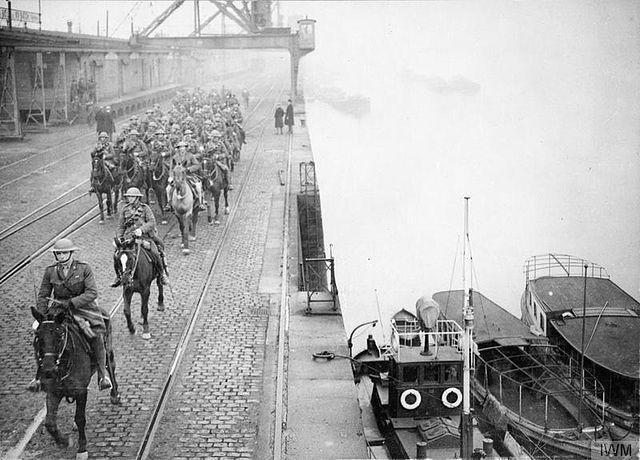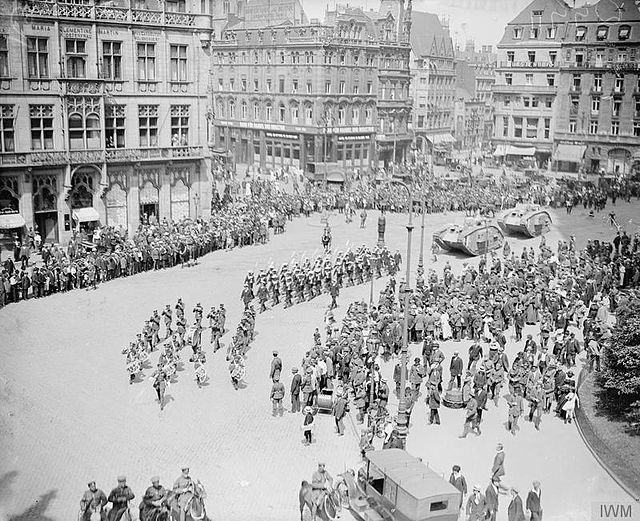History of the British 1st Division during the World Wars
The 1st Division was an infantry division of the British Army that was formed and disestablished numerous times between 1809 and the present. It was raised by Lieutenant-General Arthur Wellesley for service in the Peninsular War. It was disestablished in 1814 but re-formed the following year for service in the War of the Seventh Coalition and fought at the Battle of Waterloo. It remained active in France until 1818, when it was disbanded. It was subsequently raised for service in the Crimean War, the Anglo-Zulu War, and the Second Boer War. In 1902, it was re-raised in the UK. This latter event saw the division raised as a permanent formation, rather than being formed on an ad hoc basis for any particular crisis.
British Trench First World War
German troops inspect a British improvised pier, made of abandoned vehicles, at Dunkirk.
As a charge explodes nearby, troops of the 1st Battalion, Duke of Wellington's Regiment scramble up cliffs during a live-firing exercise at Cromer in Norfolk, 21 April 1942.
Men of the 2nd Battalion, Sherwood Foresters firing a captured German MG42 machine gun, 27 April 1943.
British Army of the Rhine
British Army of the Rhine (BAOR) is the name given to two British Army formations of the same name. Both were originally occupation forces in Germany, the first after the First World War and the other, active after the Second World War and during the Cold War, eventually becoming part of NATO's contribution to allied forces there. Both formations had areas of responsibility located around the German section of the River Rhine.
Formal group photograph of British and French officers and commissioners outside the house of the Commander-in-Chief Allied Armies of Occupation, Marienberg
18th Hussars in Cologne, 6 December 1918.
Field Marshal Lord Plumer, General Officer Commanding-in-Chief the British Army of the Rhine, taking the salute from the 29th Division entering Cologne by the Hohenzollern Bridge
Two tanks passing through Cologne for inspection by the VI Corps Commander, General Aylmer Haldane, June 1919








